School History: William C. Bryant Intermediate School
Remembering Our Past
Built at a cost of $968,764 by general contractor W. A. Sherman, William Cullen Bryant Intermediate School opened its doors to students for the first time on September 6, 1960. Construction of the building was incomplete at that time, so the choice was made to open Bryant and limit the students’ access to just the classroom areas of the building. Bryant Intermediate School’s first principal was John L. Patterson.
Whatever is on the lunch menu Monday at William Cullen Bryant Intermediate School, probably all of the students will be buying. Monday is the first day of operation for the school’s beautiful new, superbly equipped cafeteria. Bryant School opened in September of 1960 with the school only partially completed, because the alternative would have been for the students to attend Groveton High School on a double shift. Students probably learned a little about construction along with the “three R’s,” since work on the school continued while classes were being conducted. ~ Northern Virginia Sun , January 26, 1961
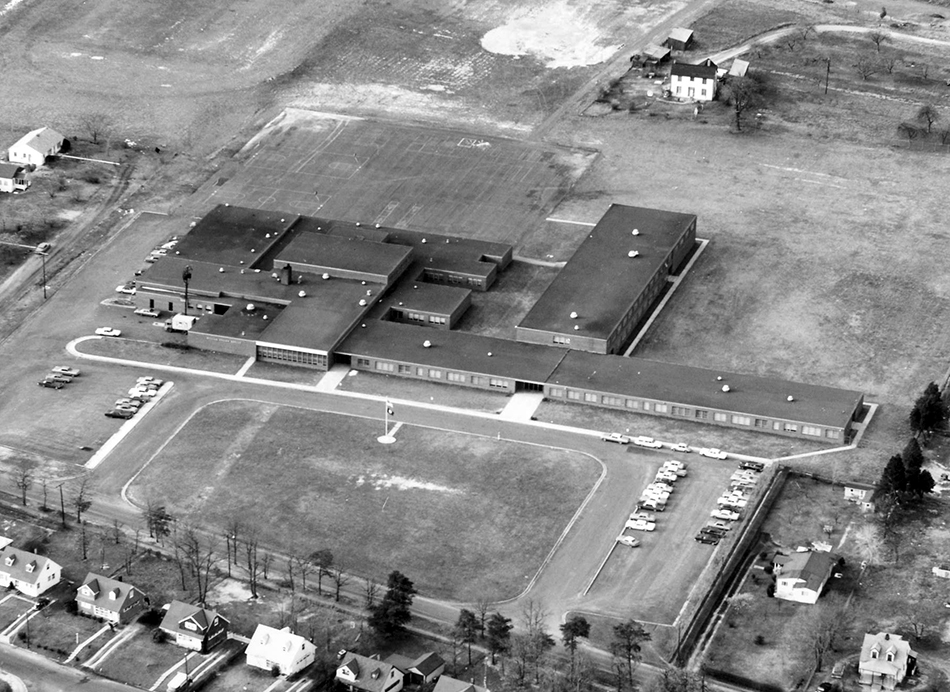
In April 1961, the following excerpt appeared in The Evening Star newspaper’s “School of the Week” column. The article was written by Bryant School reporters Cathy Cresswell and Rosemary George.
From the architect’s angle, our new school could be described as a large, sprawling expanse of modern brick architecture, surrounded by a newly budding carpet of green grass. The interior decorator would tell of wide, spacious corridors lined with combination lockers, and of well-lighted classrooms equipped with clocks, blackboards, desks, and our modern intercom system. Seventh graders take English, Virginia history, math, French, art, music, home economics or shop, science, physical education, and a new study called guidance. Eighth graders may elect to study either French or United States history, and also may choose between beginning algebra for advanced students or regular math for normal students. We have also formed many interesting clubs for our enjoyment – chorus, drill team, tumbling team – and clubs for those interested in photography, science, drama, and landscaping. ~ The Evening Star , April 14, 1961
Making History
In September 1960, William Cullen Bryant Intermediate School made history by becoming one of Fairfax County’s first racially integrated schools. A lawsuit regarding the desegregation of Fairfax County Public Schools (FCPS) ended when Federal District Court Judge Albert V. Bryan ordered the Fairfax County School Board to begin admitting Black students to white schools closer to their homes.
The decision had an immediate impact on Bryant Intermediate School. Barbara Jackson, one of the plaintiffs in the lawsuit, lived only half-a-block away from Bryant. But, because of the color of her skin, she had been forced to travel 13.9 miles away to the all-Black Luther Jackson School in Merrifield.
By September 1961, ten Black children had been admitted to Bryant Intermediate School. Three years later, a desegregation report showed that 32 students of color were enrolled at Bryant during the 1964-65 school year. The desegregation of the county’s public schools was completed in June 1966, with the closing of the county's last two all-Black elementary schools, Eleven Oaks and James Lee.
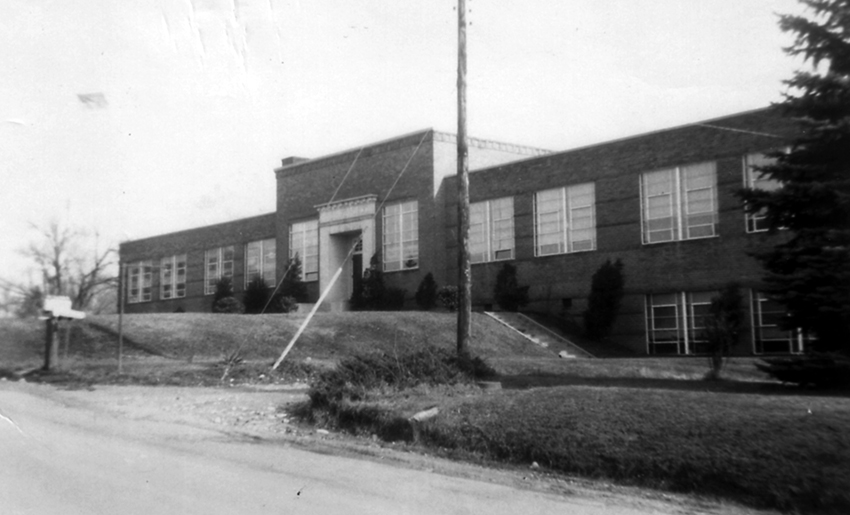
Eminent Domain and a Gentlemen’s Agreement
Bryant Intermediate School was built on land once owned by the Quander family. In 1960, James Quander, under threat of having his entire farm taken by eminent domain, entered into an agreement to sell 15 acres to the School Board for the Bryant Intermediate School site. Quander, then in his late 70s, retained ownership of 3.8 acres on which he maintained a kitchen garden and farmed potatoes and strawberries. Six years later, when FCPS sought to expand the size of the Bryant property, James Quander was threatened once again with condemnation proceedings for his land. This time, the community came to his aid.
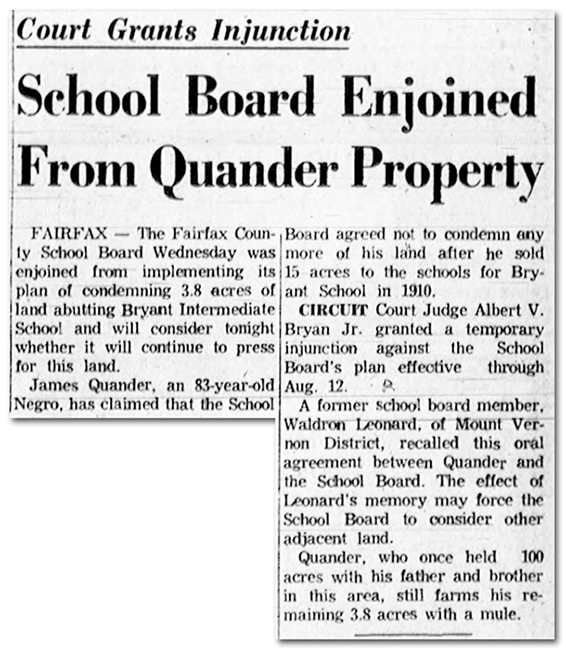
The School Board of 1966 was composed of entirely different members than the board of 1960. The new board could not find any written evidence of the 1960 agreement regarding James Quander’s land.
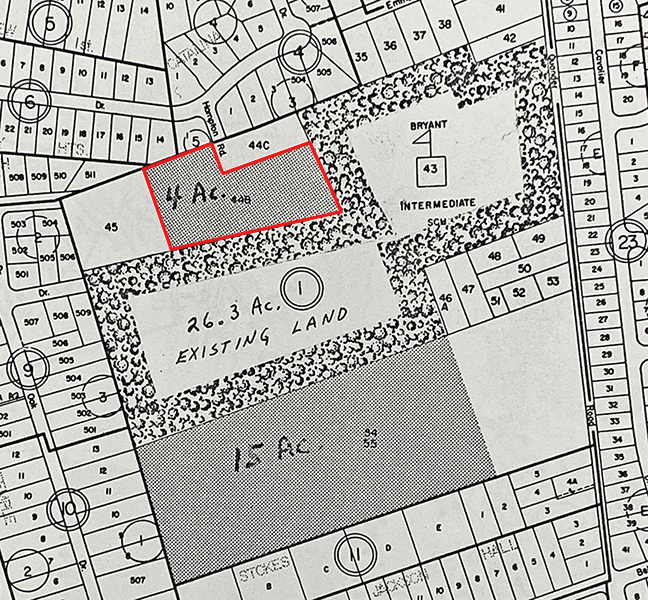
School Board members decried Quander’s efforts to save his farm as a delay tactic to drive up the price of the land. This was met with immediate pushback from people in the community, who were appalled at the thought of the School Board forcing an 83-year-old man out of his home. Fortunately, former School Board chairman Waldron Leonard came to Quander’s aid and testified on his behalf.
Waldron E. Leonard, the former school board chairman, confirmed Quander’s statement that he had been promised no more of his land would be taken for the school. “I was the one who arranged the agreement,” said Leonard. “We definitely understood that we would leave the old man alone on his remaining 3.8 acres for as long as he lived. I don’t know why they keep needling the old man. They’re going to kill him. He and his family are a fine bunch of citizens and good neighbors. It was his cooperation that made it possible to build Bryant quickly. At first all of his land was going to be taken. I learned of it when he came to my house with a petition, asking the white people to help him save his home. He was nervous and crying. When we promised to leave his house alone and leave a little land for a garden, he immediately agreed to sell us land.” ~ The Washington Post , July 21, 1966
Waldron Leonard’s testimony swayed the court in James Quander’s favor and saved his home.
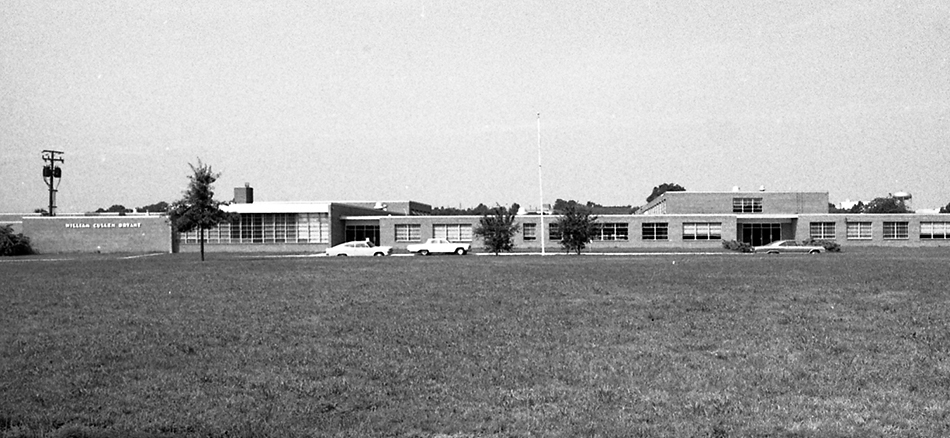
The New Groveton High School
As early as the spring of 1966, the School Board had begun studying a proposal to exchange campuses between Bryant Intermediate School and Groveton High School. Groveton High School had become significantly overcrowded. The property on which Groveton was located was too small to permit expansion of the facility, so FCPS began acquiring additional land around Bryant Intermediate School in anticipation of relocating Groveton to that site. It was this action which led to the lawsuit involving James Quander’s property.
The plan, as outlined for the School Board in July 1966, was to convert Bryant Intermediate School into a 2,500-pupil capacity high school for opening in 1970. However, the project was stalled for several years due to a lack of funding. In the late 1960s, the School Board formed a working group, composed of community members, educators, and architects, called the Charrette Committee, to design the new Groveton High School. The Charrette Committee returned a proposal for a campus-style facility with several free-standing buildings. The new high school would become Fairfax County’s first “community school” with facilities for public health, neighborhood activities, and community meetings. The School Board approved the proposal in September 1971 and plans for its implementation went into action.
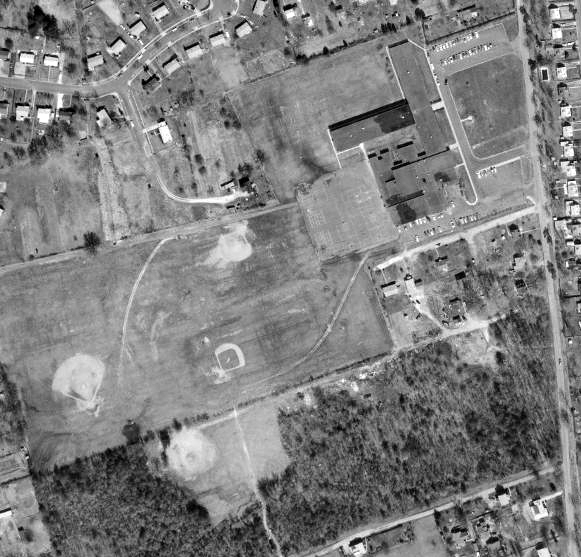
In June 1972, a school bond referendum was held in which voters were asked to approve the sale of municipal bonds to fund the construction of multiple schools, including the new Groveton facility. County residents, many of whom were concerned that existing classroom space was not being utilized properly elsewhere in the county, voted against the proposed sale and the bond issue failed. One year later, another school bond referendum was held. This time, the School Board asked for just $24 million in municipal bond sales, which was about one-third of the amount previously asked for. The bond passed, and, on April 25, 1974, the School Board awarded the contract for the Bryant/Groveton conversion project to L. F. Jennings, Inc., for $6.8 million.
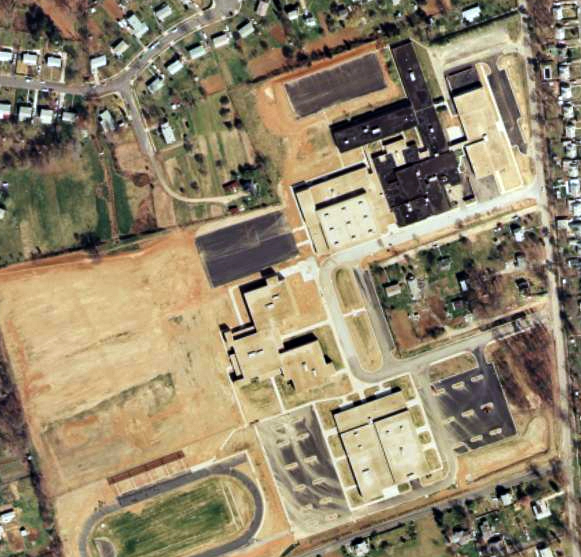
In the Interim
To complete the construction of the new Groveton High School, it was necessary to close Bryant Intermediate School to students. For two years, from 1974 to 1976, Bryant’s students were divided between Foster, Hayfield, Twain, and Whitman intermediate schools. In November 1975, with student enrollment in eastern Fairfax County beginning to decline, the School Board discussed whether to reopen Bryant after construction of Groveton High School was complete. The principals of the four schools to which Bryant students had been sent stated that their schools continued to face overcrowding and urged the School Board to reopen Bryant Intermediate School in September 1976.
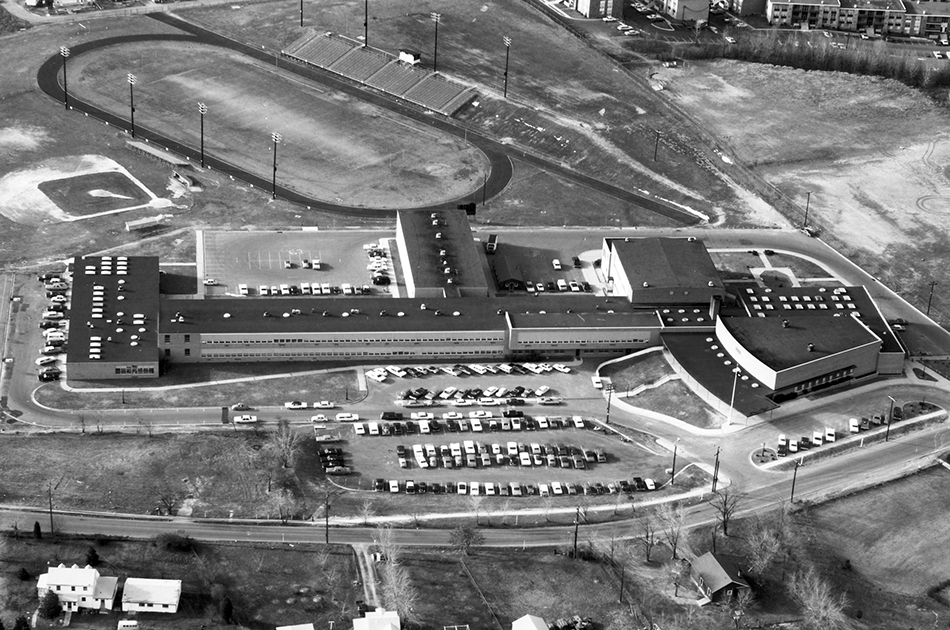
On Sunday, October 24, 1976, a ceremony was held rededicating the old Groveton High School building as William Cullen Bryant Intermediate School.
A vision of the school as a community center, held by many Groveton residents for the past eight years, became a reality Sunday with the rededication of Groveton High School and Bryant Intermediate School. The ceremonies were held at Bryant Intermediate, formerly the old Groveton High School, where student president Danny Brown presented Bryant Principal Rodney Taylor with a commemorative plaque. The Groveton High School Band led a parade of student floats and officials to the new high school for a second ceremony. ~ The Washington Post , October 28, 1976
Bryant Closes
In 1972, after three decades of continued growth, enrollment in FCPS peaked at 138,000 students. From the mid-1970s into the 1980s, enrollment steadily declined, which led to the closure of 13 elementary schools between 1975 and 1982. As more and more students aged out of the school system, the intermediate and high schools began to see an abundance of empty classrooms. In 1985, citing high operating costs and declining enrollment, the School Board voted to close Fort Hunt High School and merge its student body with that of Groveton High School. The merger of the two schools had a ripple effect on their intermediate feeder schools.
The most controversial aspect of the Board’s action was its conversion of Fort Hunt High School to an intermediate school. Students and teachers from Bryant and Foster intermediate schools will shift, en masse, to the new Fort Hunt Intermediate, while students and teachers from Whitman Intermediate will move as a unit to Foster’s present side. Projected enrollment for the new Whitman/Foster Intermediate is 750 students, with 1,100 students projected for Fort Hunt Intermediate. Whitman currently has 680 students, while Foster has 670, and Bryant has 550. ~ The Washington Post , March 28, 1985
Bryant Intermediate School closed permanently in June 1985, and its students were reassigned the following year to the old Fort Hunt High School facility, which had been renamed Carl Sandburg Intermediate School . In the fall of 1985, the School Board approved a proposal to use 20 classrooms at Bryant for adult education classes. In February 1986, an alternative education center for intermediate school-aged children opened at Bryant. The program later expanded to include high school students and the facility became known as Bryant Alternative High School. Its name was shortened to Bryant High School in the 2010s.
The Principals
Some of the former principals of Bryant Intermediate School were John L. Patterson (1960-67), Nelson W. Coe, Jr. (1967-74), Rodney B. Taylor (1976-82), and J. Victor Lutz (1982-85).
What’s in a Name?
Learn about Bryant Intermediate School’s namesake in this video produced for Fairfax County Public Schools’ cable television channel Red Apple 21.

